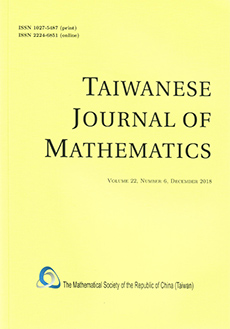Abstract
In this paper, we study the geometry of the free-boundary arising from local minimizers of a degenerate version of the Alt–Caffarelli functional. Specifically, we consider local minimizers of the functional $J_{Q}(u,\Omega) := \int_{\Omega} |\nabla u|^{2} + Q(x)^{2} \chi_{\{u>0\}} \, dx$ where $Q(x) = \operatorname{dist}(x,\Gamma)^{\gamma}$ for $\gamma \gt 0$ and $\Gamma$ a submanifold of dimension $0 \leq k \leq n-1$. Previously, it was shown that on $\Gamma$, the free boundary $\partial \{u \gt 0\}$ may be decomposed into a rectifiable set $\mathcal{S}$, which satisfies effective estimates, and a cusp set $\Sigma$ [11]. In this note, we prove that under mild assumptions, in the case $n = 2$ and $\Gamma$ a line, the cusp set $\Sigma$ does not exist. Building upon the work of Arama and Leoni [3], our results apply to the physical case of a variational formulation of the Stokes' wave.
Funding Statement
The author acknowledges the Center for Nonlinear Analysis at Carnegie Mellon University for its support.
Acknowledgments
The author thanks Giovanni Leoni and Irene Fonseca for their invaluable generosity, patience, and guidance.
Citation
Sean McCurdy. "Conditions for Eliminating Cusps in One-phase Free-boundary Problems with Degeneracy." Taiwanese J. Math. 28 (2) 359 - 376, April, 2024. https://doi.org/10.11650/tjm/240102
Information





